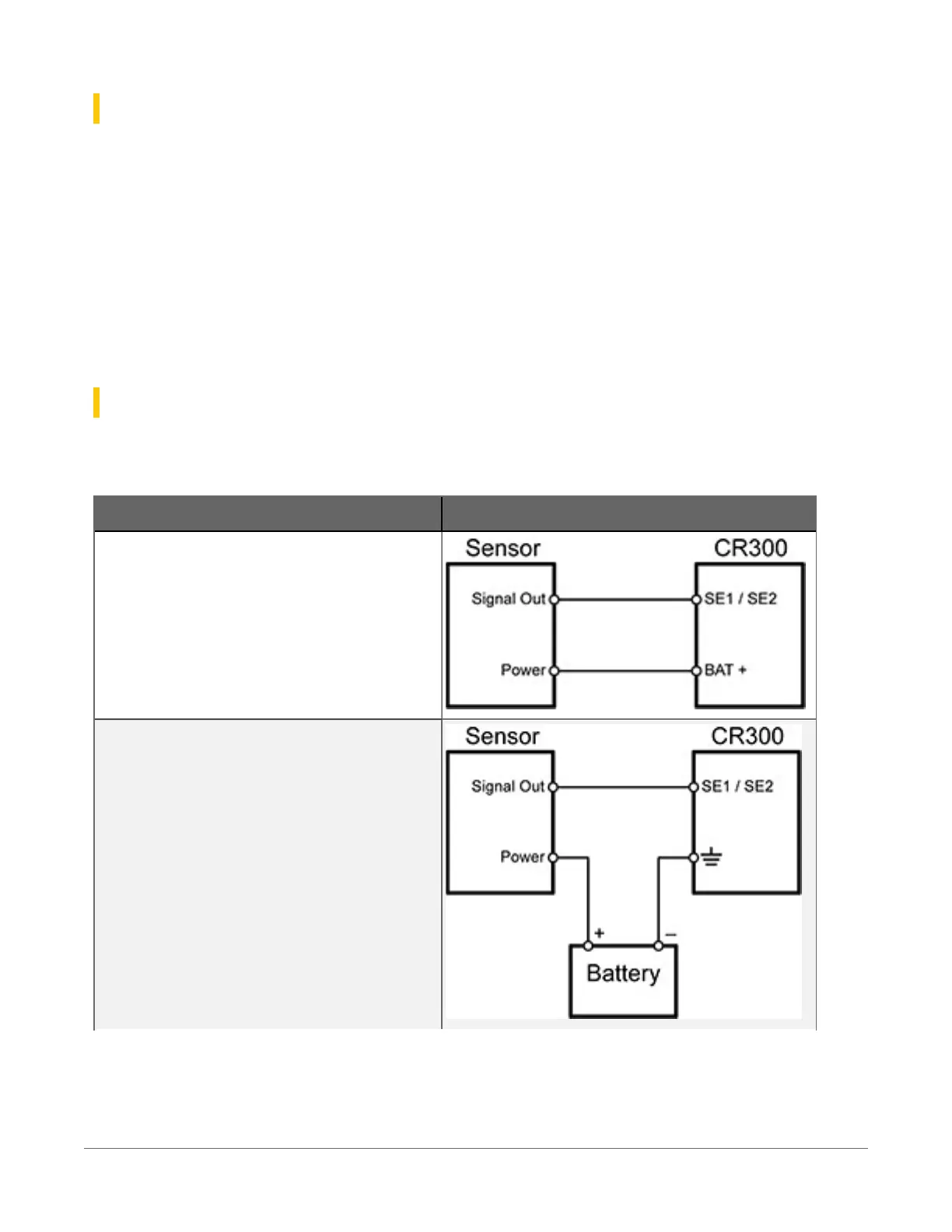18.2.1 Voltage ranges for current measurements
The data logger measures the current through the use of a 100 Ω resistor. Thus, like a single-
ended voltage instruction, it requires a voltage range option. In general, use the smallest fixed-
input range that accommodates the full-scale output of the transmitter. This results in the best
measurement accuracy and resolution.
To select the appropriate voltage range, the expected current output range must be known.
Using Ohm’s Law, multiply the maximum expected current by 100 Ω to find the maximum voltage
to be measured. Because the maximum voltage input is 2500 mV, the maximum current input
must be 25 mA or less.
18.2.2 Example current-loop measurement connections
The following table shows example schematics for connecting typical current sensors and
devices. See also Current-loop measurement specifications(p. 246).
Sensor type Connection example
2-wire transmitter using data logger power
2-wire transmitter using external power
18. Measurements93

